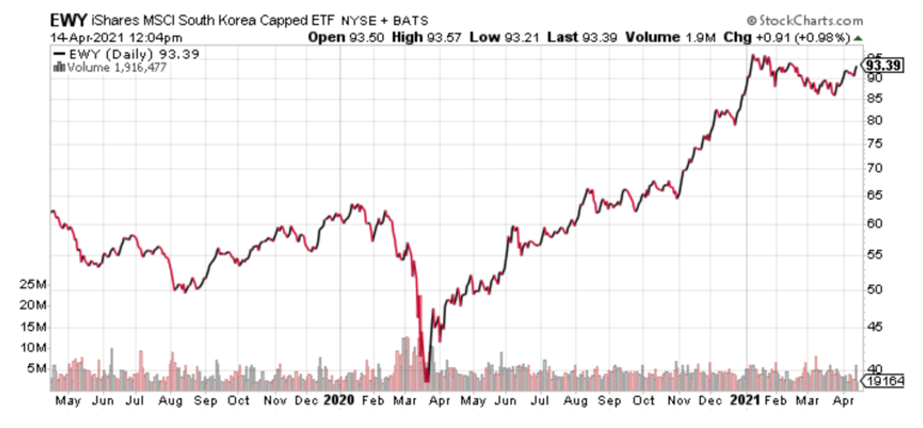As a self-styled, big-picture, geo-macro guy, I’m drawn to “great power” history and politics. So, lately, I’ve been reading a lot about our evolving relationship with China.
It’s fascinating subject matter full of compelling set pieces, starting, in the modern era, with U.S. support for the Republic of China during the Second World War that gave rise to legendary outfits such as the Flying Tigers and operations such as the airlift over “The Hump” that kept the Mainland supplied from April 1942 to August 1945.
Of course, after 1949, the Chinese Communist Party took control. And it wasn’t until 1972 that former President Richard Nixon went to the People’s Republic of China to meet with Chairman Mao Zedong.
That epochal journey set the stage for globalization and the 21st century.
We’ve seen the extension of the “information superhighway” around the world and similar integration of industrial and commercial supply chains only a quarter of the way into it. And here we are, employing tropes that defined the previous 100 years to describe the status quo.
Thus, it’s refreshing to read Stephen Wertheim, author of “Tomorrow, the World” and director of Grand Strategy at the Quincy Institute, and his tweet from April 25:
"Performative Cold War" might be the way to characterize U.S.-China relations right now: the powers increasingly deploy the ideological sheen of Cold War hostility, but they still show little interest in economic decoupling or military confrontation. pic.twitter.com/gr3gcALBLQ
— Stephen Wertheim (@stephenwertheim) April 25, 2021
That’s a good thing. We do not have to speak this 21st-century cold war into existence.
Indeed, looking at it from an investor’s perspective, it’s best to right-size the China situation. And that, as Jon Markman notes, means talking about South Korea:
Washington politicians are correct to focus on the growing influence of China, yet South Korea is quietly taking a leadership role in electric vehicles (EVs), a key driver of future economic growth.
SK Innovation and LG Chem reached a last-minute agreement on Sunday that threatened to cripple American EV production before it even got started. The South Korean firms have agreed to share the spoils of the American battery market.
It is difficult to ignore the influence of South Korean technology firms. Samsung is the global smartphone leader, selling 255 million devices in 2020. Its flat-panel screen technology is the envy of the world and a major reason the firm has been the top maker of TVs for 15 years running. The Seoul, South Korea-based company is also the world’s third-largest maker of the semiconductors and optical sensors used in everything from automobiles to fancy cameras.
And LG Electronics, its domestic rival, is a major player in chemicals, telecom, consumer electronics, appliances and, more recently, battery technology. The timing could not be better.
Batteries have become integral in every part of contemporary life. Today’s smartphones, watches, cameras, power tools and vehicles depend on a steady supply of batteries that are increasingly produced at LG Chem, the battery division of LG Electronics.
None of this is by accident. The South Korean government meticulously planned the rise of its technology sector.
As recently as 1960, the Asian country had been one of the poorest in the world. However, when the military took over the government in 1961 following the Korean War, leaders were determined to quickly remake the economy. The foundation of their plan was state-directed bank financing, aggressive promotion of industrial exports and a massive investment in science and technology capacity. The Korean Advanced Institute of Science, established in 1971, became the first technical university in the developing world.
The offshoot of these investments was the development of chaebol. Loosely translated as rich family, chaebols are large, often family-owned conglomerates closely aligned with the government.
That’s why the emergence of South Korean companies as battery technology leaders is so important.
LG Chem and SK Innovations have been entangled in litigation since 2019 when SK won large contracts to supply batteries to Volkswagen AG (OTCPK: VWAGY) and Ford Motor Co. (NYSE: F) from a planned facility in Georgia. LG managers claimed intellectual property theft after SK hired away 80 LG engineers. And in February, managers were vindicated when the International Trade Commission (ITC) ruled in favor of LG Chem.
Unfortunately, that ruling put the Georgia manufacturing plant and future American EV production at severe risk. President Biden threatened to overturn the ITC ruling, prompting an agreement between SK Innovations and LG officials.
The lawsuit settlement provides LG with $1.8 billion in cash upfront plus ongoing royalties. The agreement also enhances South Korea’s strategic grip on the burgeoning EV market in one of the most important markets.
It is worth noting the Korean government has made EVs a top priority. Officials hope to expedite the transition to EVs within South Korea while ensuring that domestic companies — particularly automakers Kia, Hyundai Motor Co. (OTCPK: HYMTF) and Genesis — play a leading role globally.
The heavy-handed strategy involves requiring all domestic automakers to use the Electric Global Modular Platform made by Hyundai. Consumers will also be incentivized to buy EVs with expansive government subsidies that will effectively reduce the cost of batteries by 50% through 2025, according to a Business Korea report.
This is a significant global competitive advantage for automakers, battery suppliers and the companies that make semiconductors and integrated circuits.
The best way for American investors to gain exposure is with the iShares MSCI South Korea ETF (NYSE: EWY). The ETF holds large positions in Samsung, LG Chem, Hyundai and Kia Motors. The structure also negates all of the hassles of foreign taxes and learning the complex relationships between the chaebols.

More importantly, owning the iShares MSCI South Korea ETF puts investors in a promising position to benefit from the growth of EVs, a market that is certain to grow rapidly in the next decade.
Click here to follow Jon’s commentary on markets and the “great digital transformation” that’s giving the 21st century its real edge.
Best wishes,
David Dittman

